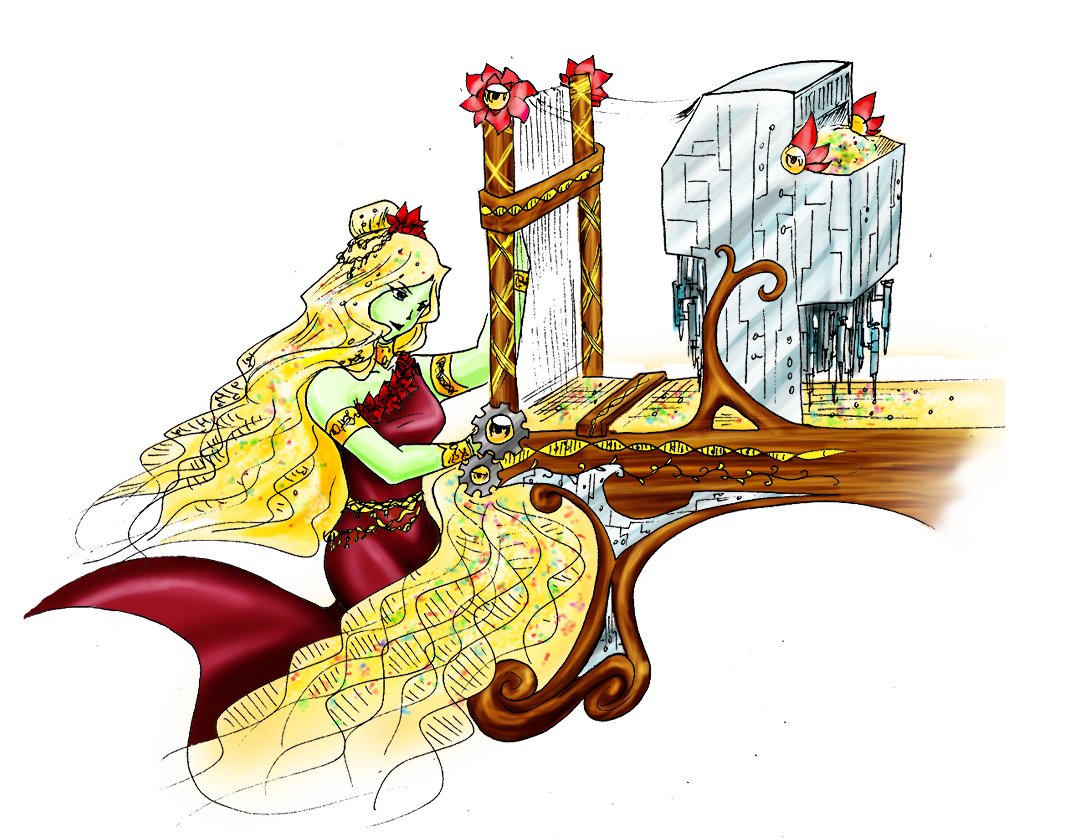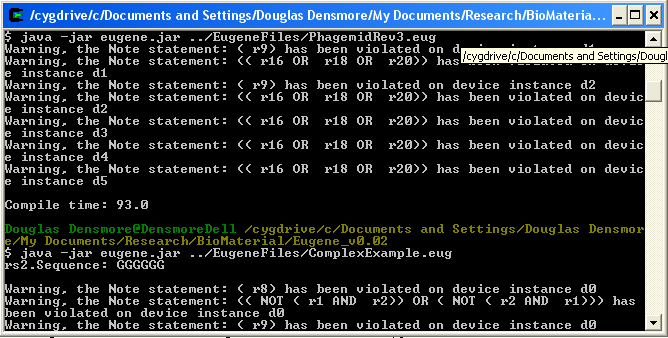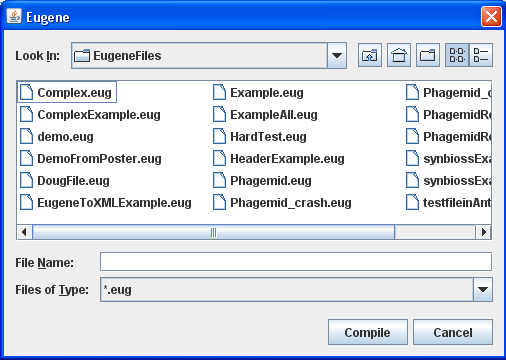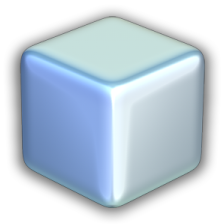Team:Berkeley Software/Downloads
From 2009.igem.org
(→Eugene Domain Specific Language - [Code, Documentation]) |
(→Eugene Domain Specific Language - [Code, Documentation]) |
||
| Line 31: | Line 31: | ||
[[Image:Eugene.png|150px|right|thumb|Eugene Domain Specific Language]] | [[Image:Eugene.png|150px|right|thumb|Eugene Domain Specific Language]] | ||
Here the Eugene programming language interpreter is available. Eugene's interpreter is based on [http://www.antlr.org ANTLR]. Also included are example files and information on how to run the tool. We provide both an executable jar which one can run graphically as well as support for command line operation. We strongly recommend you read the comprehensive '''README''' file that comes bundled with the download. In addition [http://en.wikipedia.org/wiki/Syntax_highlighting syntax highlighting] support is available in the download for [http://notepad-plus.sourceforge.net/uk/site.htm Notepad++]. | Here the Eugene programming language interpreter is available. Eugene's interpreter is based on [http://www.antlr.org ANTLR]. Also included are example files and information on how to run the tool. We provide both an executable jar which one can run graphically as well as support for command line operation. We strongly recommend you read the comprehensive '''README''' file that comes bundled with the download. In addition [http://en.wikipedia.org/wiki/Syntax_highlighting syntax highlighting] support is available in the download for [http://notepad-plus.sourceforge.net/uk/site.htm Notepad++]. | ||
| - | [[Image:EugeneCmdLine.png|150px|thumb|Eugene Command Line Operation]] | + | [[Image:EugeneCmdLine.png|150px|left|thumb|Eugene Command Line Operation]] |
| - | [[Image:EugeneGUI.png|150px|thumb|Eugene GUI Operation]] | + | [[Image:EugeneGUI.png|150px|left|thumb|Eugene GUI Operation]] |
<br clear="all"> | <br clear="all"> | ||
Revision as of 20:32, 18 October 2009
Downloads
On this page you have links that access all the code and documentation for the tools that we have written. Clotho, Eugene, Spectacles, and Kepler (workflows and actors) are all major software projects. For example in the Clotho project alone there are over 200 files and 250,000 lines of code. Therefore in addition to the source code and documentation, we highly recommend the use of an integrated development environment (Netbeans for example; info below) as well as the use of a [http://en.wikipedia.org/wiki/Revision_control versioning system] (SVN for example; info below). Our code is all open source under a general [http://en.wikipedia.org/wiki/BSD_licenses BSD license] and the majority of the code (99%) is written in [http://en.wikipedia.org/wiki/Java_(programming_language) Java].
Contact Information
For general information or to contribute: clothodevelopment AT googlegroups DOT com
For emails regarding any bugs: clothobugs AT googlegroups DOT com
For emails regarding any desired features: clothofeatures AT googlegroups DOT com
Clotho Design Environment - [[http://sourceforge.net/projects/clothocad/ Code], [http://sourceforge.net/projects/clothocad/support Documentation]]
The code link (above) connects to [http://sourceforge.net sourceforge] (an open source code distribution website) where the "download now" button on the project main page provides a build of the Clotho core framework. This is the standalone version of Clotho and should be downloaded by the majority of Clotho users. In this form Clotho comes packaged along with the following Clotho tools:
- Algorithm Manager - tool for running assembly algorithms to create efficient composite device assemblies.
- Enzyme Library - mechanism for highlighting and locating enzymes in DNA sequences.
- Features Library - library of user defined annotations for DNA sequences.
- Notepad - basic text editing utility which acts as a virtual lab notebook.
- Parts Manager - parts browser and manager.
- Sequence View - DNA sequence editor and viewer.
- Spectacles - visual editing environment for device construction.
The download is an executable jar file which you can run from your computer. The source code itself is available here as well. This allows advanced users to build Clotho with only the tools they want. In addition you can incorporate the Clotho Remote Method Invocation (RMI) tool which is available there (used to connect with Kepler). Also available is the alpha version of the SPAM (Sequence Packaging And Manipulation) tool and Clotho "Classic" Beta (the older version of Clotho).
Eugene Domain Specific Language - [[http://sourceforge.net/projects/eugene/ Code], [http://sourceforge.net/projects/eugene/support Documentation]]
Here the Eugene programming language interpreter is available. Eugene's interpreter is based on [http://www.antlr.org ANTLR]. Also included are example files and information on how to run the tool. We provide both an executable jar which one can run graphically as well as support for command line operation. We strongly recommend you read the comprehensive README file that comes bundled with the download. In addition [http://en.wikipedia.org/wiki/Syntax_highlighting syntax highlighting] support is available in the download for [http://notepad-plus.sourceforge.net/uk/site.htm Notepad++].
Kepler/Clotho Integration - [[http://sourceforge.net/projects/keplerclotho/ Code], [http://sourceforge.net/projects/keplerclotho/support Documentation]]
We have created a number of workflows and actors for Kepler which are available here. This is source code only and requires advanced knowledge of not only Java and the process of building complex Java projects. Much of this also requires advanced knowledge of [http://kepler-project.org Kepler].
Java 6
Clotho and all its tools along with the Eugene interpreter all require Java 6. You can get it [http://java.sun.com/javase/6/ here]. Also there are a number of issues regarding using Java 6 on Macs. More information on getting Clotho to run on Macs is available [?? here].
Netbeans
Clotho is developed using the [http://www.netbeans.org Netbeans] Integrated Development Environment. We highly recommend you use Netbeans to avoid any potential difficulties. In particular Netbean's GUI builder creates .form files which allow for the creation of Java Swing based GUI elements.
Subversion
 "
"







